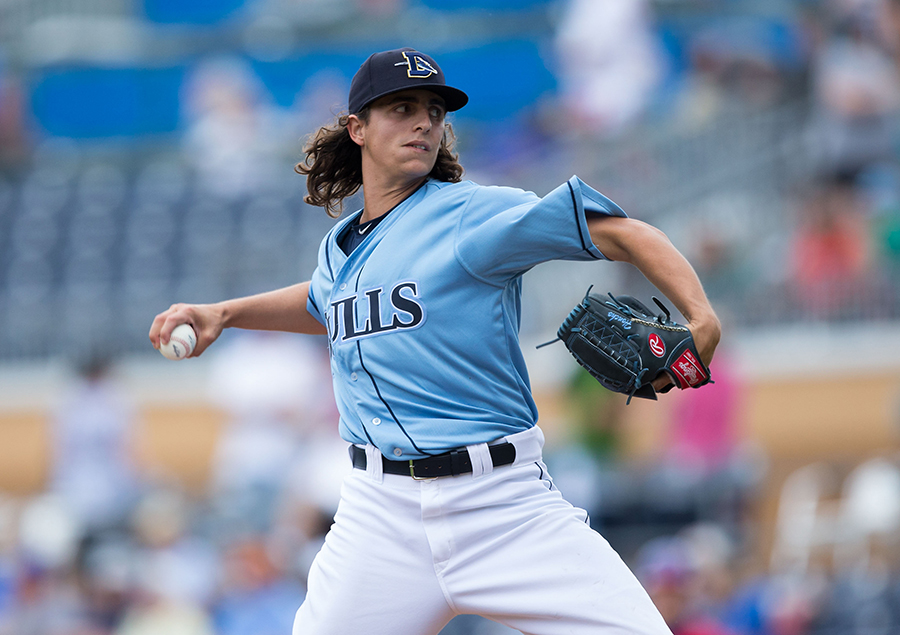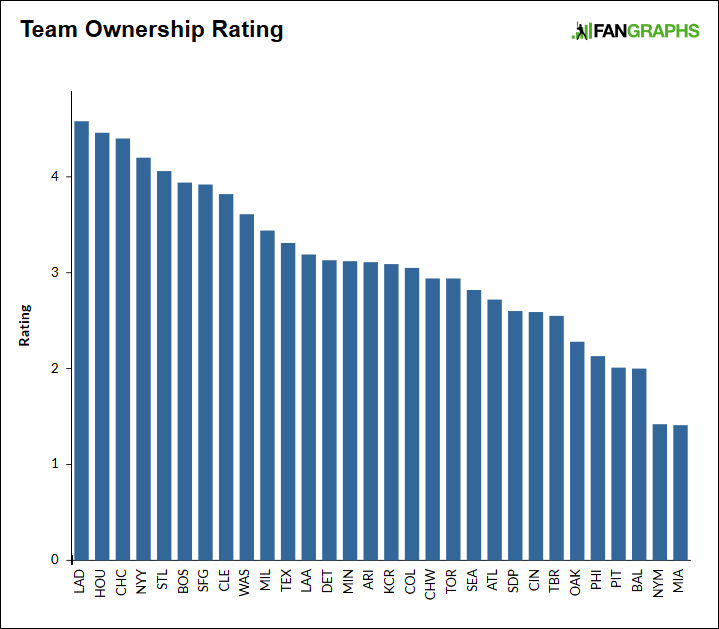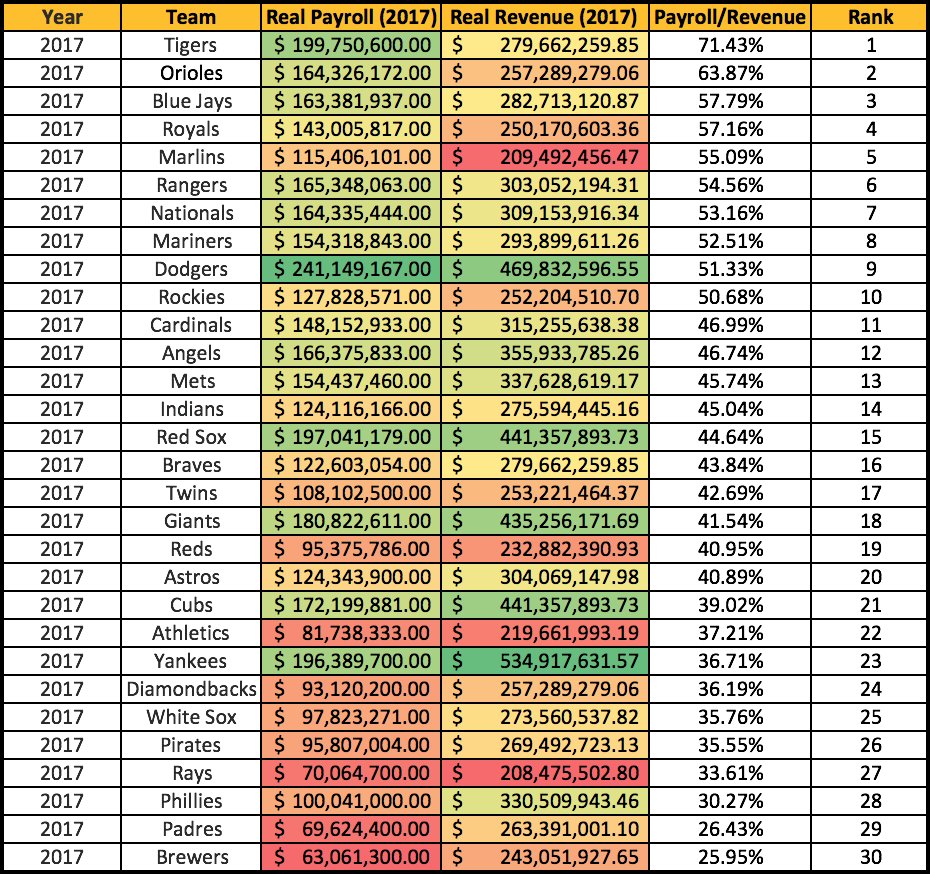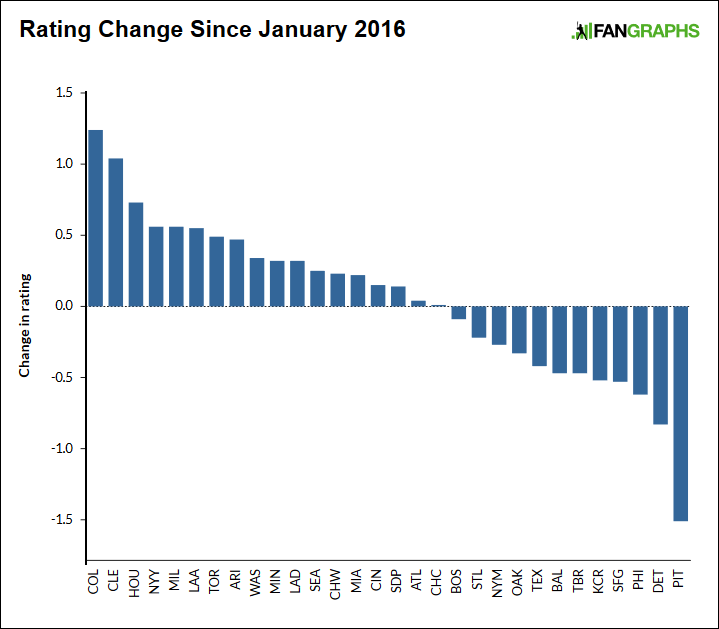
Following the release of Baseball America’s Top-100 prospect list, Keith Law (ESPN) issued his Top-100 prospect list Tuesday morning. As with the aforementioned prospect list, four future all-stars — Brent Honeywell, Willy Adames, Brendan McKay, and Jesus Sanchez — round out the top 50 for the Tampa Bay Rays. The White Sox and Braves also have four prospects in the top 50.
Per Law:
Number 15 RHP Brent Honeywell
He’s a good No. 4 starter right now, but there are plenty of ways for him to exceed that, from tightening the slider to improving his command, and now that he’s fully healthy, I expect him to get to that No. 2-3 starter range in time.
Honeywell is the sixth highest hurler, and fourth highest right-hander.
Number 20 SS Willy Adames
If he stays at short, he has All-Star upside with the bat, and if he packs on too much muscle to stay there, he may end up a 30-homer third baseman with OBP skills and an above average glove instead.
Adames is the fifth best shortstop listed, and could make an impact on the 2018 roster.
Number 28 LHP/1B Brendan McKay
He could be an above-average starting pitcher in the majors or a middle-of-the-order bat at first base. My money is very slightly on the former.
Number 34 OF Jesus Sanchez
Sanchez has very fast hands, allowing him to cover more of the strike zone and pitches beyond the zone than most hitters do. He’ll show plus raw power that started to show up more in games this year. He has 25-30 homers very much within his reach as he fills out.
Not listed were 1B/OF Jake Bauers (No. 45 on Baseball America’s Top-100 list), 3B Christian Arroyo (recently acquired in the Evan Longoria trade), SS Lucius Fox, and SS Wander Franco.
FanGraphs ownership ratings
Speaking of evaluations, Jeff Sullivan (FanGraphs) released his annual team ownership ratings on Monday. Sullivan found that Rays’ fans have a low favorability rating for the ownership group, led by Stuart Sternberg — a grade that has been dropping since January 2016.
According to Sullivan, a number — from 1 to 5 — was assigned with 5 being the best response. The average rating was 3.05, slightly above true middle.

Tampa Bay falls somewhere in the 2.75 – 2.80 range, some 25 points below the true mid-way point.
Sullivan also found that the ratings correlate well with payroll, with the Dodgers leading the pack all the way to the left of the graph (above), and Miami — led by the Derek Jeter ownership group, which traded away players like Giancarlo Stanton and Marcell Ozuna for peanuts — on the right.
As expected, Sternberg’s ownership group is the seventh least beloved sort in the league, which is largely due to the fact that the team cuts payroll consistently to the chagrin of the fan-base.

For context, the Rays opened last season with a $70,064,700 payroll after netting $208,475,502.80 in 2016. In other words, Sternberg spent just 33.61% of the team’s profits on the roster, while the league average was 44.66%. Even the Marlin’s previous ownership group spent more on the roster ($115,406,101) even though the ball club pulled in roughly $1-million more than the Rays in 2016.

Sternberg’s favorability among the Rays’ fan-base has dropped approximately 0.3 points in just two years — down from 3.1 to where it currently sits.
Sullivan found that is for two reasons:
- Payroll, which I talked about above.
- On field success or, in the case of the Rays, lack thereof.
In the words of Sullivan:
The Indians have assembled a juggernaut. The Astros won the World Series, the Yankees are great again, the Brewers are almost out of their rebuild, and the Angels have seemingly built a competitive team. On, and on.
The opposite, however, is true. A more extreme example, the Pirates rating dropped an incredible 1.51 points since 2016, when Pittsburg’s ownership rated the 11th-best.
Sullivan spoke to that dramatic decline:
My sense was that people had long been frustrated by the financial constraints within which the club was forced to operate. But, last time, the Pirates were coming off a third consecutive playoff berth. Since then, they’ve won just 78 and 75 games, and instead of payroll skyrocketing, it’s remained around the same place, and now two members of the core have been traded for longer-term assets.
That should sound familiar to the fan-base that watched as the face of the franchise was dealt to San Francisco just like Andrew McCutchen, formerly the face of the Pirates.
To put things another way, when just 33% of the overall revenue is used on the roster, pundits, bloggers, journalists and the front office forgoes the right to question why the fan-base may have disdain for the ownership group, led by Sternberg. Then again, I guess it is easier to claim poor me, as Tampa Bay’s principal owner seemingly does every season, when in actuality the team appears not to use its overall revenue wisely enough.
